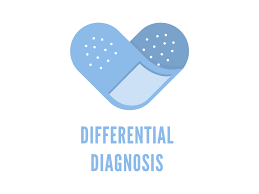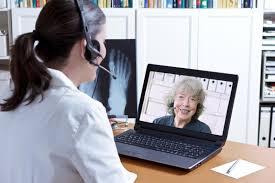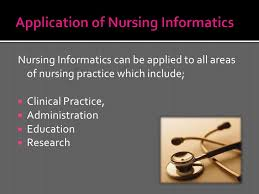
Differential Diagnosis
Order Instructions:
hello,
Id like my work to have 5-6 figures with its reference.And there is a copy of the work on your website
http://customphdthesis.com/essay/diagnostic-techniques-in-pathology-2014-5/
SAMPLE ANSWER
- Differential Diagnosis
The patient has many presenting symptoms and this is a challenge to identifying the disease at once. The productive cough of the patient is purelent indicating the presence of a large number of white blood cells mainly neutrophillic granulocytes. The purulent sputum of asthmatic is as a result of eosinophillic cells (Farzan N.p). The patient’s blood stained sputum (hemoptysis) may be caused by a wide range of underlying disorders ranging from trauma to heart problems to lung diseases to many other infections. Patients in industrialized countries such as china, bronchitis, bronchogenic carcinoma and bronchiectasis may lead to a productive blood-stained cough but are ruled out since chest X-rays in these diseases are shown to be normal (Jaiswal pp. 176-178.). Lung cancer is also ruled out because its diagnosis does not indicate the presence of rod-like bacteria. Pulmonary embolus is also ruled since diagnosis of sputum is found to be non-purulent. Hemoptysis and purulent sputum may also be observed in patients with HIV, where the common cause is typical pneumonia (Health Grades Editorial Staff, Chamberlain 2012).
Home. n.d)
A patient with pneumonia may also present a cough with purulent sputum (Lower Respiratory Tract Infections N.p). Scanty acid-alcohol fast bacilli are also observed in a patient with HIV but this infection is also ruled since HIV patients show a normal X-ray. The patient may be suffering from Chronic Obstructive Pulmonary disease since X-ray shows flattened diaphragm but it also ruled out because the Ziehl Neelsen’s method does not show the presence of the rod –like bacteria (Acute Exacerbations of COPD, N.p). The patient may be having tuberculosis which is the most common cause of hemoptysis and also due to the observation of scanty acid-alcohol fast bacilli in the patient’s sputum (Yoon pp. 172). Observation of heavy pus cells and red blood cells and multiple light areas which coalesce provides evidence that the patient has tuberculosis (Tuberculosis, advanced – chest x-rays N.p).
- Table of the Biochemistry Results
| Protein | Result | Normal Range |
|
|
| C-reactive protein | 13mg/l | 1-3 mg/l | 10-40
10 1 |
|
| Creatine kinase | 125IU/I | 10-120IU/I | 308
39-308 39 |
C-Creatine (hs-CRP) is an essential clinical tool used by physicians to assess patients to determine if they can benefit from a statin therapy. The rise in levels of CRP is brought about inflammation hence it serves as a marker for inflammation. Different diseases and infections have varying ranges of CRP. The CRP of 13 mg/l measured for the patient indicates an increased sensitivity presenting mild inflammation.
(The Relationship Between C-Reactive Protein and Cardiovascular Disease. (n.d.)
The patient’s CK is within the normal range. This implies that there is no injury to muscles in the body (Clinical significance of markedly elevated serum creatine kinase levels in patients with acne on isotretinoin. n.d.).
- Chest X-ray Pathology Test
The patient was directed to stand in front of the X-ray machine and instructed to hold his breath at the time the X-ray is taken. The radiologist usually takes two images, that is, one is taken when the patient is standing next to the machine while the other is taken while standing sideways. In case the patient is pregnant, chest X-rays are not recommended at all. In fact, no chest X-ray should be taken of the pregnant woman when she is in first six months pregnant.
(TUBERCULOSIS: No longer down and out. n.d)
All other patients can have the chest X-rays as long as they have diseases suggestive of a chest related problem. These may include the patient experiencing a persistent cough, coughing blood or productive cough with purulent, and having difficulty in breathing. If the patient has shown advanced signs of tuberculosis, one’s doctor can order for a chest X-ray. There are no expected complications as long as it is not repeated many times within a short time or a certain number of times in the patient’s life span.
The patient’s symptoms suggest that he has Tuberculosis (cough, rod-like bacteria, fever). He, therefore, would require chest X-ray besides microbiological testing. The radiologist will take both the lateral and the posterior-anterior (PA) films with each having clear notes. The typical changes he will be looking for include air space consolidation, fibrous contraction and cavitation on the superior parts of the lobes or one or both superior parts of the lower lobes or upper lobes. The extensive infiltrate with air space consolidation in noted with a bronchogram( ). The number of cavities formed is indicated by (+). Ina addition, reticulonodular satellite fibrosis and lesions are seen surrounding the involved lung which is normally identified by a traction of the right upper hilum. However, atypical finding will be more profound if the patient has human immunodeficiency virus (HIV) (Testing for tuberculosis n.d.).The result on the X-ray depends on the level of the disease. On the X-ray result film there will be seen an abnormality on the mid and lower lung fields.
- Interpretation of data and Diagnosis of the patient
Based on the symptoms which have been listed, the patient has an upper respiratory infection which indicated by the cough (Rabkin N.p, n.d). There are a number of diseases which are indicated by the hemoptysis such as bronchogenic and bronchitis. But only Tuberculosis diagnoses with the rod-like bacteria in the purulent and blood-stained sputum. The patient experiences fever which comes about by the body’s struggle to fight the foreign disease causing microorganisms. That is why his average body temperature is higher than the normal 37 .4 d degrees centigrade. According to the X-ray, the arrow points to the air space consolidation, fibrous contraction and cavitation which can be observed clearly on the superior parts of the lobes or one or both superior parts of the lower lobes or upper lobes.
The suggestion that the patient is suffering from TB is based on other examinations made which indicate that the patient is not generally well. The patient was also referred to the urologist because he was suspected to have genitourinary tuberculosis. The result from the urologist which indicated 15 leukocytes in the field, confirms the presence of foreign antigens in the genitourinary system, probably, the mycobacterium, the rod shaped bacteria which causes tuberculosis (Savage pp. 1998 N.p).
More evidence that the patient is suffering from Tuberculosis is indicated by the result obtained from staining the purulent and blood stained sputum with Ziehl Neelse’s method which also confirmed the presence of large a number of scanty acid-alcohol fast bacilli. The result indicated that each field had more than 20 pus cells within a single field. This was an indication a high density of the mycobacterium, the organism behind the genesis and progression of tuberculosis. Besides pus cells, rod-like bacteria or streptococci are observed. Although few in number, they are still the causative and infectious agents of both pulmonary and genitourinary tuberculosis.
Ziehl neelsen staining. (n.d.).
The presence of red blood cells also indicates that more oxygen is needed to for respiration to produce energy needed by leucocytes. This suggestion was based on the underlying symptoms such as the immobilization of the commercial disease associated antigens. This were observed on the plastic micro-wells’ surfaces and were specifically bound IgG antibodies from Alfred’s serum to his diseased parts. There was also a positive result when peroxidise- conjugated goat which is also indicated by anti-human IgG bound Alfred’s IgG in change. Also, resistance to Amphicilin and Isoniazid in which the test carried out shows sensitivity to the drugs.
- 5. Discussion
- a) The Lesion (Abnormality) in the Chest X-Ray
The lesion is observed as an extensive infiltrate and air-space consolidation on the upper lobe of the right lung. A number of cavities are also observed as indicated by the positive (+) signs. Also, observed are surrounding reticunodular satellite lesions which are very easy to note. There are also fibrotic lung lesions. These are also consistent with tuberculosis at an untreated inactive state of the disease. These lesions make the patient more at risk than their counterparts with a tuberculosis infection if both were more than eight years.
b) Why did the urologist request the submission of three specimens?
X-ray alone is not enough to confirm that a suspect has TB . The urologist might have requested to carry out other diagnostic tests associated with TB. The results obtained support the radiology results. The comparison of the results from both departments helps the two practitioners to confirm with certainty the actual disease the patient is suffering from. The results from the urology department such as cid-fast smear which is used for microscopic identification of the cause of the pulmonary tuberculosis. The results show the presence bacilli and pus cells.
- c) Significance of Using Early Morning Specimens
The urologist requested for the urine specimens produced by the patients in the early morning since it is less contaminated by lyses red blood cells. This is because the urine collected soon after a prolonged recumbency or soon after a vigorous physical or even sexual activity should not be examined when assessing the patient’s state of microhematuria since he knows it is contaminated. Patients are advised to void the first 5 ml of the urine and then collect up to 50 ml of the remaining urine in a sterile bottle.
d) Antibiotics Used As Treatment of Pulmonary TB
After diagnosing with TB, a number of antibiotics are prescribed by a doctor as a therapy for the infections and to prevent emergence of resistant bacteria in the body. They are used in a period of 6-12 months. The combination of the antibiotics includes:
- Isoniazid
- Rifampin
- Pyrazinamide,
- Ethambutol
(Tuberculosis (TB) – Treatment. n.d.).
(The rationale for recommending fixed-dose combination tablets for treatment of tuberculosis. n.d.).
- e) Route; Drug Resistance; Combination Therapy and Length Of Therapy.
Since is has pulmonary TB, he will take two antibiotics orally in a combination of rifampicin and isoniazid every day for six months. He will have an additional oral administration of two antibiotics in a combination of pyrazinamide and ethambutol every day for two months (Tuberculosis (TB) – Treatment. n.d.).
f) Further Investigations to Determine the Spread of the Disease
To determine the spread of the disease within him, three tests may be conducted. Positive tuberculin test leads to the development of cell-mediated immunity which develops within 2-8 weeks from the time of infection. The mechanism behind this phenomenon is that activated T Lymphocytes combine with macrophages to form granulomas which are effective in limiting replication hence curbing the spread of bacilli. Ziehl Neelsen method may be used to determine the level of infection by the bacilli. Lastly, use biochemistry tests such as determine the level of damage to specific muscles of the body.
g) The Disease Progress and Prognosis for the Patient
Tuberculosis disease begins with infection and overcoming the carrier of the mycobacterium’s immune system defences. During primary tuberculosis, the disease is dormant and the immune system is able to contain the infecting and its spread. The bacteria multiplies, it continues affect the immune system and eventually overwhelms it leading to tuberculosis (Testing for tuberculosis n.d.).
List of Works Cited
Acute Exacerbations of COPD | Doctor | Patient.co.uk, [Available at: http://www.patient.co.uk/doctor/acute-exacerbations-of-copd][ [Accessed on 11th November, 2014]
Chamberlain, N. 2012, “CLINICAL SYNDROMES OF PNEUMONIA” . [ Available at http://www.atsu.edu/faculty/chamberlain/Website/lectures/lecture/dxpneumo.htm][Accessed on November 11, 2014]
Clinical significance of markedly elevated serum creatine kinase levels in patients with acne on isotretinoin. (n.d.). [Available at http://www.researchgate.net/publication/11559091_Clinical_significance_of_markedly_elevated_serum_creatine_kinase_levels_in_patients_with_acne_on_isotretinoin] [Accessed on 11th November, 2014]
Farzan, S. 1990, “ Clinical Methods: The History, Physical, and Laboratory Examinations. 3rd edition: Chapter 38Cough and Sputum Production. Butterworth Publishers, a division of Reed Publishing. [Available at: http://www.ncbi.nlm.nih.gov/books/NBK359/][Accessed on11th November, 2014]
Health Grades Editorial Staff, -. (n.d.). Sputum Symptoms. [Available at:http://www.healthgrades.com/symptoms/sputum-symptoms][Accessed on November 11, 2014]
Home n.d., [Available at http://tbevidence.org/][Accessed on November 12, 2014]
Jaiswal, A., Munjal, S., Singla, R., Jain, V. & Behera, D. 2012, “A 46-year-old man with tracheomegaly, tracheal diverticulosis, and bronchiectasis: Mounier-Kuhn syndrome”, Lung India, vol. 29, no. 2, pp. 176-178.
Lower Respiratory Tract Infections. (n.d.). [Available at http://www.atsu.edu/faculty/chamberlain/Website/lectures/lecture/dxlrt.htm ][Accessed on 11th November, 2014]
Rabkin, M. n.d., “ Upper Respiratory Tract Infection.” Retrieved November 11, 2014, from http://www.medicineclinic.org/AmbulatorySyllabus4/NEWURI.htm
Savage, P., Roddie, M. & Seckl, M.J. 1998, “A 28-year-old woman with a pulmonary embolus”, The Lancet, vol. 352, no. 9121, pp. 30.
Testing for tuberculosis. (n.d.). [Available at http://www.australianprescriber.com/magazine/33/1/12/18/][Accessed on November, 2014].
The Relationship Between C-Reactive Protein and Cardiovascular Disease. n.d., [.Available at http://www.medscape.org/viewarticle/500049_4][Accessed on November 11 2014]
The rationale for recommending fixed-dose combination tablets for treatment of tuberculosis. (n.d.). [Available at http://www.ncbi.nlm.nih.gov/pmc/articles/PMC2566330/][Accessed on November 11, 2011]
Tuberculosis (TB) – Treatment . (n.d.).[Available at :http://www.nhs.uk/Conditions/Tuberculosis/Pages/Treatment.aspx][Accessed on November, 2014]
Tuberculosis, advanced – chest x-rays: MedlinePlus Medical Encyclopedia Image. (n.d.). [Available at: http://www.nlm.nih.gov/medlineplus/ency/imagepages/1607.htm][Accessed on November 11, 2014]
Yoon, Soon Ho, Nyoung Keun Lee, and Jae Joon Yim. “Impact of Sputum Gross Appearance and Volume on Smear Positivity of Pulmonary Tuberculosis: A Prospective Cohort Study.” BMC Infectious Diseases 12 (2012): 172. ProQuest. Web. 11 Nov. 2014.
Ziehl neelsen staining n.d., [Available at http://images.1233.tw/ziehl-neelsen-staining/][Accessed on November 11, 2014]
We can write this or a similar paper for you! Simply fill the order form!












